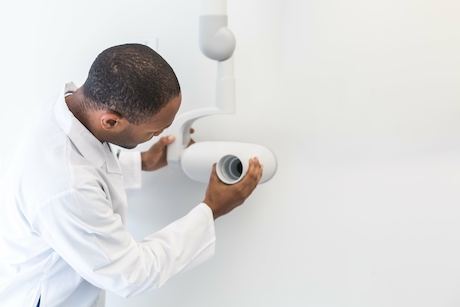How Ionizing Radiation Works

Any energy that is emitted from a source is classified as “radiation.” [1] Ionizing radiation has enough energy that it can remove tightly bound electrons from the orbit of an atom, causing the atom to become charged, or ionized. When a cell in the human body becomes ionized, it either dies, repairs itself, or mutates and becomes cancerous.
When the dose of ionizing radiation is small, it does not cause any harm. We are all exposed to small amounts of ionizing radiation during the normal course of our lives, including through contact with soil, water and plants. Of course, we are also exposed to radiation through man-made technologies and advances such as cell phones, microwave ovens and televisions. In the medical industry, X-rays and other imaging procedures and therapies—the largest source of manmade radiation [2] —are helpful in diagnosing and treating many kinds of medical conditions. The key to living with radiation is to limit the ionizing radiation dose the human body receives — and make sure, when used for medical purposes, that it is targeted to the specific area in question.
Healthcare workers need to be aware of ways to reduce exposure to radiation as much as possible. The U.S. Nuclear Regulatory Commission specifies that employees should not be exposed to more than 1,250 mrem of ionizing radiation dose per quarter, or 5,000 mrem per year. The higher the dose, the more likely a human cell will die or become cancerous.
X-ray technicians, nurses who assist in cardiac catheterization procedures, and physicians who are involved in procedures that use imaging cannot completely avoid exposure to radiation, due to the demands of their respective careers. Instead, closely monitoring the daily and cumulative dose received and adhering to established best practices are the best ways to protect against radiation exposure. The Instadose+TM dosimeter, a digital radiation monitoring device offers peace of mind — every day. Unlike the old film dosimetry badges, the Instadose+ dosimeter can be read by a personal computer or mobile device to provide an immediate report of daily or cumulative radiation exposure. It’s a smarter way to monitor exposure levels to ionizing radiation.
[1] http://www.who.int/ionizing_radiation/about/what_is_ir/en/
[2] SOURCE: Center for Devices and Radiological Health & U.S. Food and Drug Administration, Initiative to Reduce Unnecessary Radiation Exposure from Medical Imaging (February 2010).